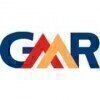Filter interviews by
RBM Infracon Site Incharge Interview Questions and Answers for Experienced
RBM Infracon Site Incharge Interview Experiences for Experienced
1 interview found

(1 Question)
- Q1. About Work experience
Top trending discussions






Interview questions from similar companies

Senior Engineer Interview Questions & Answers
Megha Engineering & Infrastructuresposted on 14 Jul 2017
I appeared for an interview before Jul 2016.
Interview Preparation Tips
Duration: 4 hours 5 minutes
Round: Test
Duration: 2 hours 5 minutes

Senior Engineer Interview Questions & Answers
Megha Engineering & Infrastructuresposted on 23 Oct 2020
I applied via Recruitment Consultant and was interviewed in Apr 2020. There were 3 interview rounds.
Interview Questionnaire
1 Question
- Q1. About HT/LT,Motor/Feeder & Substation Errection & Commission.
Interview Preparation Tips

I applied via Recruitment Consultant and was interviewed in Sep 2019. There were 3 interview rounds.
Interview Questionnaire
2 Questions
- Q1. Question about material reconciliation, allowable wastage question based on previous work experience
- Q2. It's not easy to describe it in a few words because of the interview time is more
Interview Preparation Tips

Interview Preparation Tips

Senior Engineer Interview Questions & Answers
Megha Engineering & Infrastructuresposted on 20 Dec 2020
I applied via Naukri.com and was interviewed in Nov 2020. There was 1 interview round.
Interview Questionnaire
4 Questions
- Q1. What is the previous job role ?
- Q2. What is the percentage of bitumen in DBM ?
- Ans.
The percentage of bitumen in DBM varies depending on the specific mix design and project requirements.
DBM stands for Dense Bituminous Macadam, which is a type of road construction material.
The percentage of bitumen in DBM typically ranges from 4% to 6% by weight.
The exact percentage of bitumen is determined based on factors such as traffic load, climate conditions, and desired durability.
Higher percentages of bitumen a...
- Q3. Why you want change your company ?
- Q4. What is your salary expectation ?
Interview Preparation Tips

Senior Engineer Interview Questions & Answers
Megha Engineering & Infrastructuresposted on 17 Feb 2021
I applied via Walk-in and was interviewed in Aug 2020. There was 1 interview round.
Interview Questionnaire
1 Question
- Q1. ELSR MEANS
Interview Preparation Tips

I applied via Approached by Company and was interviewed before Feb 2023. There were 3 interview rounds.
(1 Question)
- Q1. Basic Question about your current work and technical question of what they want in me
(1 Question)
- Q1. Case study like what action you take in this particular problem
(1 Question)
- Q1. Salary discussion and document sharing

I applied via Approached by Company and was interviewed before Nov 2023. There was 1 interview round.
(2 Questions)
- Q1. Explain cyclic loading in soil?
- Ans.
Cyclic loading in soil refers to repeated application of stress on soil over time, leading to changes in soil properties.
Cyclic loading can cause soil to undergo changes in density, strength, and deformation characteristics.
Examples of cyclic loading include traffic loads on roads, wave action on coastal soils, and seismic activity on earthquake-prone regions.
- Q2. Please elaborate on liquefaction calculation?
- Ans.
Liquefaction calculation involves determining the potential for soil to lose strength and behave like a liquid during an earthquake.
Liquefaction occurs when loosely packed, water-saturated soils lose strength due to increased pore water pressure during seismic shaking.
Calculations involve assessing factors such as soil type, density, saturation, and earthquake intensity to predict liquefaction potential.
Methods like th...
Interview Preparation Tips

I applied via Referral and was interviewed before Jun 2022. There were 3 interview rounds.

(3 Questions)
- Q1. Tunnel related questions.
- Q2. Drilling pattern according rock condition
- Ans.
Drilling pattern must be adjusted based on the specific rock conditions to optimize efficiency and safety.
Consider the hardness and type of rock to determine the appropriate drilling method
Adjust the spacing and depth of drill holes based on the rock's strength and stability
Use different drilling patterns for different types of rock formations, such as sedimentary, igneous, or metamorphic rocks
- Q3. NATM related questions for Tunneling
(1 Question)
- Q1. Salary Negotiation according to your last salary
RBM Infracon Interview FAQs
Tell us how to improve this page.
RBM Infracon Interviews By Designations
Interview Questions for Popular Designations
- Site Engineer Interview Questions
- Civil Site Engineer Interview Questions
- Site Supervisor Interview Questions
- Electrical Site Engineer Interview Questions
- Senior Site Engineer Interview Questions
- Civil Site Supervisor Interview Questions
- Civil Site Incharge Interview Questions
- Site Engineer Mechanical Interview Questions
- Show more
RBM Infracon Site Incharge Interview Process for Experienced
based on 1 interview
Interview experience
Interview Questions from Similar Companies
RBM Infracon Site Incharge Reviews and Ratings
based on 1 review
Rating in categories
|
Safety Officer
23
salaries
| ₹3.1 L/yr - ₹4.5 L/yr |
|
Mechanical Engineer
17
salaries
| ₹2.1 L/yr - ₹5.2 L/yr |
|
Mechanical Maintenance Engineer
7
salaries
| ₹4.3 L/yr - ₹8.5 L/yr |
|
QA QC Engineer
7
salaries
| ₹2.4 L/yr - ₹6 L/yr |
|
Project Manager
6
salaries
| ₹5.3 L/yr - ₹17 L/yr |

Megha Engineering & Infrastructures

Alstom Transportation

Tata Technologies

Dilip Buildcon
- Home >
- Interviews >
- RBM Infracon Interview Questions >
- RBM Infracon Site Incharge Interview Questions for Experienced










